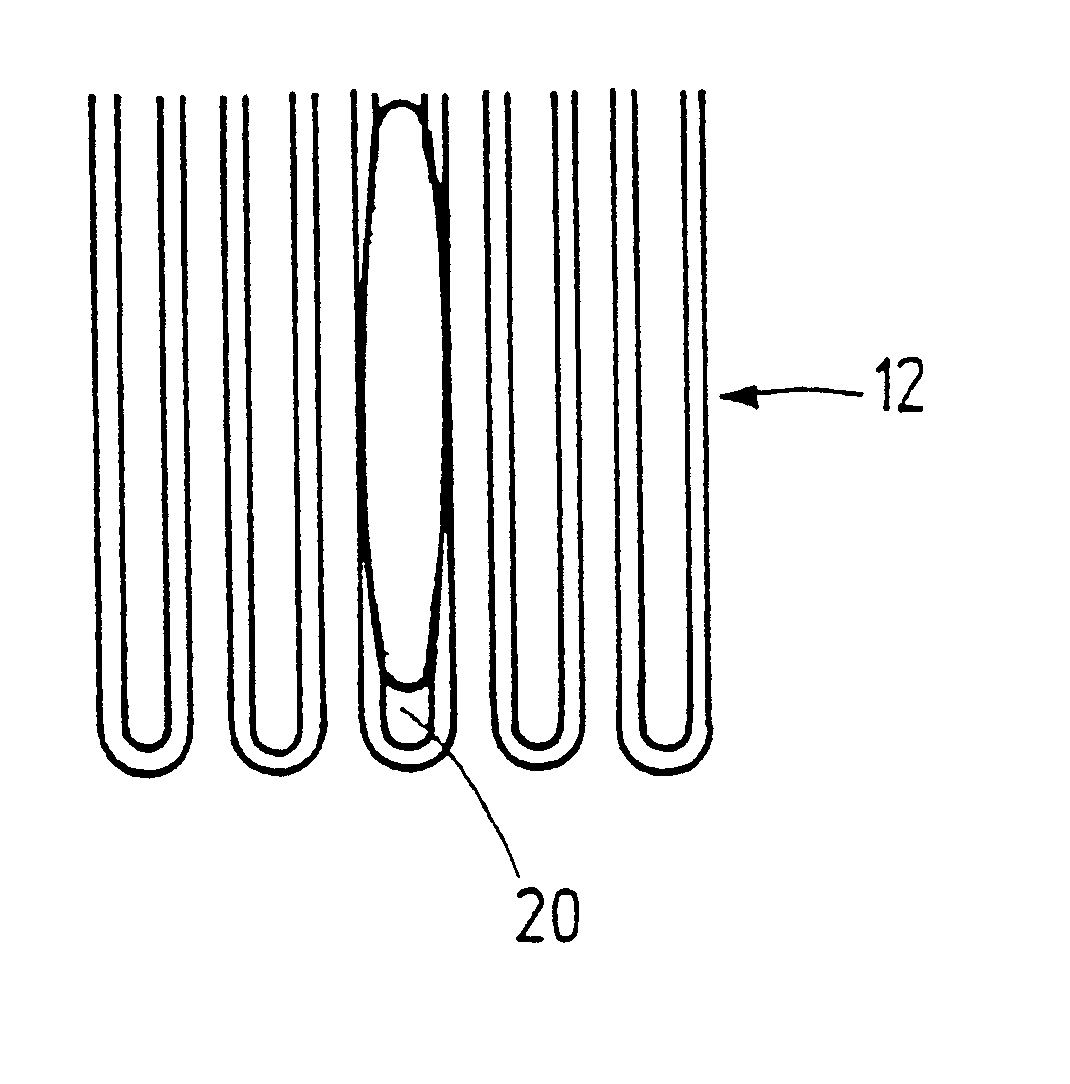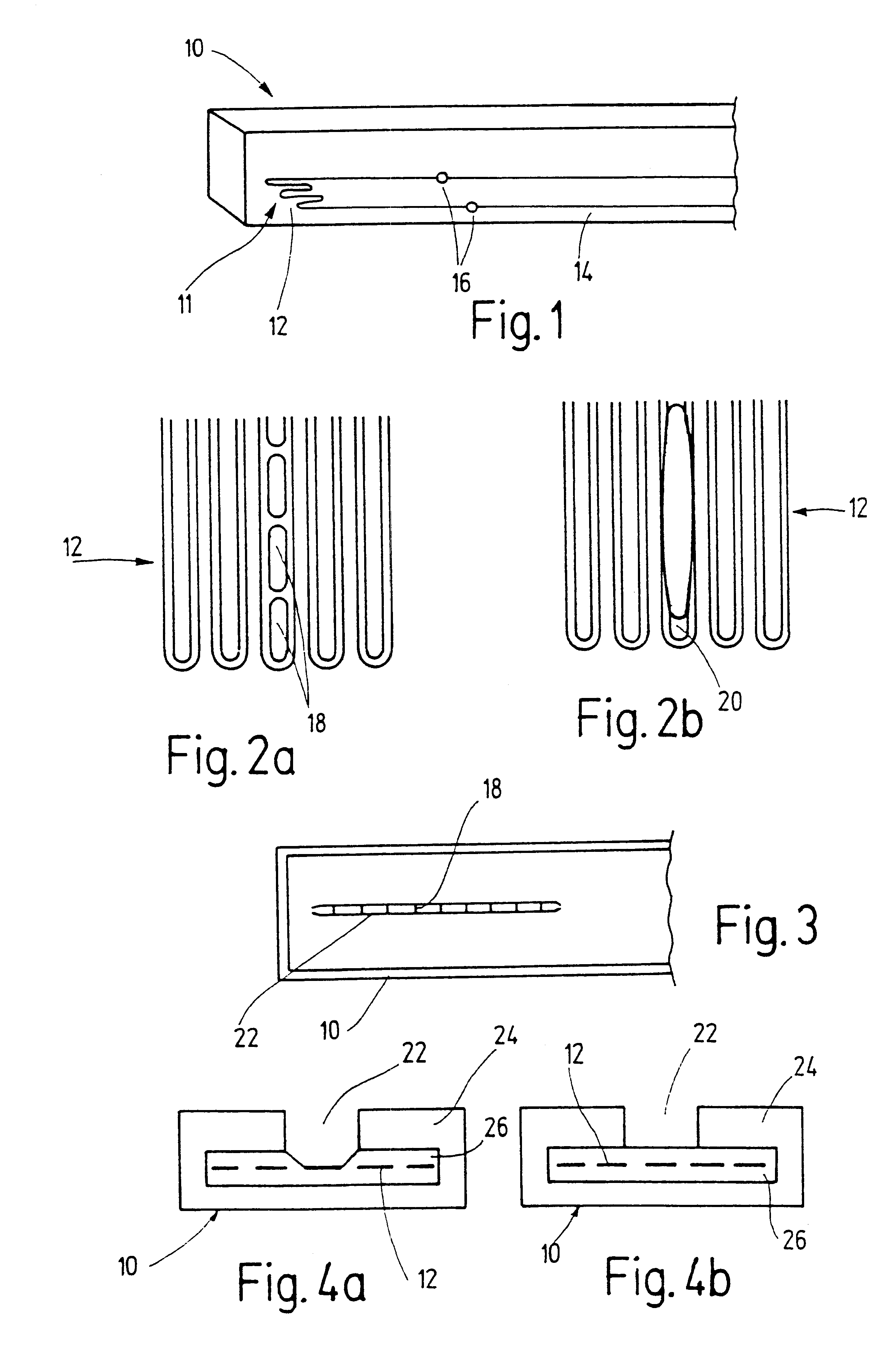Ceramic layer system and method for producing a ceramic heating device
a ceramic heating device and ceramic layer technology, applied in resistor details, ohmic-resistance heating, instruments, etc., can solve the problems of inability to trim resistance in previously known methods, corrupted detection value,
- Summary
- Abstract
- Description
- Claims
- Application Information
AI Technical Summary
Benefits of technology
Problems solved by technology
Method used
Image
Examples
Embodiment Construction
FIG. 1 shows a schematic representation of the layer containing a heating element 11 in a composite 10. Heating element 11 includes conductors 14 that are connected by points of contact 16 to a meander-shaped structure of heating element 11, referred to below as resistor meander 12. A composite 10 of this type is produced in layers, for example by sheet casting, stamping, screen-printing, lamination, cutting or sintering.
Composites 10 of this type form part, for example, of sensors that can be used to detect gas components in an exhaust gas of internal combustion engines of motor vehicles. Composites 10 can also form part of temperature sensors. It is also conceivable to use them in sensors that respond to resistance changes in the presence of certain media (gases, fluids or similar media). To guarantee a functionality of this type, the sensors have additional components which will not be discussed in any further detail here. In a sensor of this type, composite 10 would then represe...
PUM
| Property | Measurement | Unit |
|---|---|---|
| temperatures | aaaaa | aaaaa |
| resistance | aaaaa | aaaaa |
| area | aaaaa | aaaaa |
Abstract
Description
Claims
Application Information
 Login to View More
Login to View More - R&D
- Intellectual Property
- Life Sciences
- Materials
- Tech Scout
- Unparalleled Data Quality
- Higher Quality Content
- 60% Fewer Hallucinations
Browse by: Latest US Patents, China's latest patents, Technical Efficacy Thesaurus, Application Domain, Technology Topic, Popular Technical Reports.
© 2025 PatSnap. All rights reserved.Legal|Privacy policy|Modern Slavery Act Transparency Statement|Sitemap|About US| Contact US: help@patsnap.com


